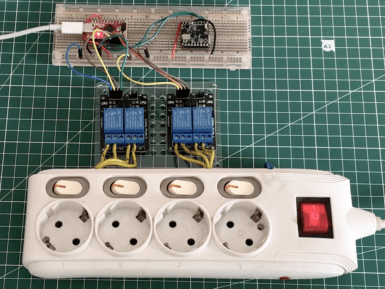
Overview
Max Carrier transforms Portenta modules into single-board computers or reference designs that enable edge AI for high-performance industrial, building automation and robotics applications.
Thanks to dedicated high-density connectors, it can be paired with Portenta X8 or H7, allowing you to easily prototype and deploy your industrial projects.
This Arduino Pro carrier further augments Portenta connectivity options with Fieldbus, LoRa®, Cat-M1 and NB-IoT.
Among the many available plug-and-play connectors there are Ethernet, USB-A, audio jacks, microSD, mini-PCIe, FD-CAN and Serial RS232/422/485.
Max Carrier can be powered via external supply (6-36V) or battery via the onboard 18650 Li-ion battery connector with 3.7V battery charger.
Key benefits include:
- Easily prototype industrial applications and minimize time to market
- A powerful carrier exposing Portenta peripherals (e.g. CAN, RS232/422/485, USB, mPCIe)
- Multiple connectivity options (Ethernet, LoRa®, CAT-M1, NB-IoT)
- MicroSD for data logging operations
- Integrated audio jacks (line-in, line-out, mic-in)
- Standalone when battery powered
- Onboard JTAG debugger via micro-USB (with Portenta H7 only)
Prototyping on Portenta projects
The Arduino Portenta Max Carrier is designed to assist developers with their prototypes by exposing the main peripherals of the high-density connectors of the Portenta family boards (H7 and X8). It allows for easy debugging through the JTAG connector and for inspection of the CAN lines through the pins. At the same time, it is the right tool to test Ethernet connectivity as well as to extend connectivity options (CAT-M1, NB-IoT and LoRa®).
Develop your own Industry 4.0 platform
Combine industrial strength and ease of use with Arduino Pro’s Portenta Max Carrier – designed to give you everything you need to implement edge computing in your smart factory or warehouse with simple plug-and-play features. Optimize your manufacturing process and material flows, control machinery remotely and even prevent failures with preventive maintenance: Max Carrier takes your innovation capabilities to the max.
Arduino Iot Cloud
Integrating with Arduino’s IoT Cloud is a simple and fast way to ensure secure communication for all of your connected Things.
TRY THE ARDUINO IOT CLOUD FOR FREE
Need Help?
Check the Arduino Forum for questions about the Arduino Language, or how to make your own Projects with Arduino. If you need any help with your board, please get in touch with the official Arduino User Support as explained in our Contact Us page.
Warranty
You can find your product warranty information here.
*Portenta X8 is not included in the product: Pictures shown are for illustration purposes only.
Tech specs
| Connectors |
|
| Audio |
|
|
Memory |
|
| Wireless modules |
|
| Operating temperatures |
|
| Dimensions |
|
| Debugging |
|
| Power/Battery |
|
Resources for Safety and Products
Manufacturer Information
The production information includes the address and related details of the product manufacturer.
Arduino S.r.l.
Via Andrea Appiani, 25
Monza, MB, IT, 20900
https://www.arduino.cc/
Responsible Person in the EU
An EU-based economic operator who ensures the product's compliance with the required regulations.
Arduino S.r.l.
Via Andrea Appiani, 25
Monza, MB, IT, 20900
Phone: +39 0113157477
Email: support@arduino.cc
Documentation
Learn more
Get Inspired

As Jallson Suryo discusses in his project, adding voice controls to our appliances typically involves an internet connection and a smart assistant device such as Amazon Alexa or Google Assistant. This means extra latency, security concerns, and increased expenses due to the additional hardware and bandwidth requirements. This is why he created a prototype based on an Arduino Nicla Voice that can provide power for up to four outlets using just a voice command. Suryo gathered a dataset by repeating the words “one," “two," “three," “four," “on," and “off” into his phone and then uploaded the recordings to an Edge Impulse project. From here, he split the files into individual words before rebalancing his dataset to ensure each label was equally represented. The classifier model was trained for keyword spotting and used Syntiant NDP120-optimal settings for voice to yield an accuracy of around 80%. Apart from the Nicla Voice, Suryo incorporated a Pro Micro board to handle switching the bank of relays on or off. When the Nicla Voice detects the relay number, such as “one” or “three," it then waits until the follow-up “on” or “off” keyword is detected. With both the number and state now known, it sends an I2C transmission to the accompanying Pro Micro which decodes the command and switches the correct relay. To see more about this voice-controlled power strip, be sure to check out Suryo’s Edge Impulse tutorial.









